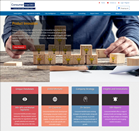Whey protein sales in India are projected to register a robust growth over the next five years. This trend is being underpinned by various factors, driving demand for whey protein in the country. The adoption of whey protein in India is still in early stages. As a result, this industry represents medium to long term business and investment opportunities. High growth and profit margins of the industry are attracting new players. There are foreign players which are trying to enter or expand their presence and domestic companies which are diversifying to enter this segment. Over the forecast period, we expect competition in the whey protein segment to intensify, resulting in increased rate of innovation.
According to ConsumerIntel360, the whey protein industry in India is expected to record a CAGR of 24.3%, increasing from US$ 0.8 billion in 2018 to reach US$ 1.9 billion by 2022.
At a fundamental level, demand for whey protein is supported by a large population base, economic prosperity, rising household consumption expenditure, increasing disposable income and favorable demographics. According to statistics, children (aged less than 14) accounted for about 27% of the population while the youth (aged 15-24) accounted for 18% of the total population. Additionally, the typical working age population (aged 25-54) accounted for 41% of the population.
Increasing awareness on health, and desire to stay fit and healthy is driving the demand for functional proteins, especially whey protein. The advice of fitness and coach instructors has also significantly influenced the demand and sales of whey protein supplements, along with celebrity endorsements. Even the growth of infant food formula market has provided an impetus for the increased demand of whey proteins as a major ingredient.
Another major driver of growth is the rapid pace of urbanization in the country. As the pace of urbanization increases, there is increased spent on healthcare and wellness. As the country continues to progress and shift from abroad-based agrarian economy to a service driven economy, urbanization will continue and in turn influence the demand for whey protein. Additionally, increasing healthcare awareness, especially among the urban youth who are more susceptible to lifestyle disorders such as hypertension and diabetes are also driving the demand for functional proteins.
Sensing this surge in consumer preference and demand for whey protein products, home-grown major, Parag Milk Foods, launched ‘absolute whey protein’ under the brand name Avvatar.
Another key trend is infusion of whey protein across various consumer packaged goods category to create product differentiation. For instance, Bagrry’s has launched Protein Muesli, a drift from the regular protein powders, targeting healthy breakfast segment. It has a mix of whey protein, almonds, and oats, which is high in fiber for easy digestion.
Whey protein market in India is dominated by foreign brands but domestic companies are quickly gaining market share by delivering high quality, leveraging existing relationships and distribution networks, and taking advantage of local manufacturing to reduce pricing. Over the last few quarters advertising budgets have gone up and with more established players such as ITC and Himalaya launching products in protein segment, competition is expected to intensify further.
Key players in whey protein segment include Optimum Nutrition, Muscle Tech, Parag Milk Foods, and MuscleBlaze. In terms of sales channels, companies look to push their products through various retail channels, be it on front-door shelves of drug and grocery stores, or through exclusive franchise outlets to showcase the entire range on offer. The target consumers base is typically in the 20-40 years age bracket, but footfalls also witness people in their 40s throng stores to look for products that supplement their fitness need.
Rate of innovation has been increasing, driven by increased competition though the market is still in nascent stage. Primary focus in on protein bars and powders at the moment with primary target being the 24-45 years age group. In terms of usage, snacking and fitness represent significant proportion of the product focus. Over the forecast period, we expect whey protein products to expand both across other consumer segments such as teens and 45+ age group. In addition, the range of products infused with whey protein will increase, in line with trend observed in developed economies. Localization of whey protein (whey protein infused with local flavors) will play a key role in gaining market share and it is expected to gain momentum over the forecast period.
To know more and get deeper understanding of market opportunities and risks in whey protein industry in India, click here.




